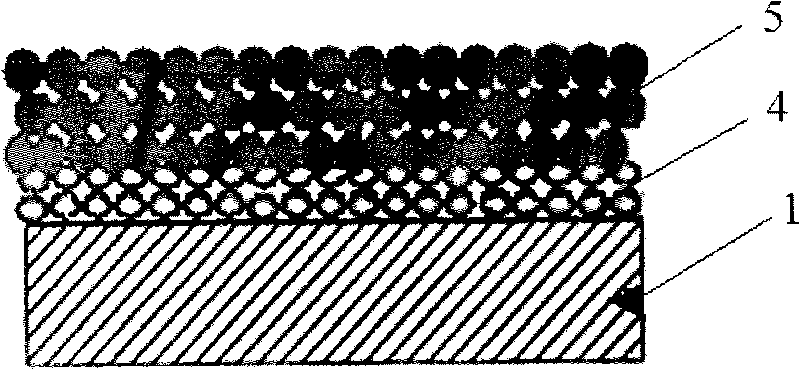Back electrode in dye-sensitized battery structure and preparation method thereof
A dye-sensitized battery and back electrode technology, which is applied to the back electrode in the dye-sensitized battery structure and its preparation field, can solve the problems of unsatisfactory and unsatisfactory effects, achieve path extension, improve conversion efficiency and Current density, effect of reducing charge loss
- Summary
- Abstract
- Description
- Claims
- Application Information
AI Technical Summary
Problems solved by technology
Method used
Image
Examples
Embodiment Construction
[0033] The specific implementation manners of the present invention will be further described in detail below in conjunction with the accompanying drawings and embodiments. The following examples are used to illustrate the present invention, but are not intended to limit the scope of the present invention.
[0034] Such as figure 1 As shown, the embodiment of the present invention provides a back electrode in a dye-sensitized cell structure according to an embodiment of the present invention, which includes a conductive substrate 1, a grating-shaped copper indium selenide film 2 on the conductive substrate, and a Platinum thin film 3 in the recessed region of the copper indium selenide thin film 2 . The copper indium selenium thin film is a polycrystalline film with a thickness of 1.5-2.0 μm. Preferably, the thickness of the copper indium selenide thin film 2 is 1.5 μm. The particle size of the CISe in the CISe thin film 2 is 90-120 nm. Preferably, the particle size of the...
PUM
| Property | Measurement | Unit |
|---|---|---|
| thickness | aaaaa | aaaaa |
| thickness | aaaaa | aaaaa |
| particle diameter | aaaaa | aaaaa |
Abstract
Description
Claims
Application Information
 Login to View More
Login to View More - R&D
- Intellectual Property
- Life Sciences
- Materials
- Tech Scout
- Unparalleled Data Quality
- Higher Quality Content
- 60% Fewer Hallucinations
Browse by: Latest US Patents, China's latest patents, Technical Efficacy Thesaurus, Application Domain, Technology Topic, Popular Technical Reports.
© 2025 PatSnap. All rights reserved.Legal|Privacy policy|Modern Slavery Act Transparency Statement|Sitemap|About US| Contact US: help@patsnap.com



